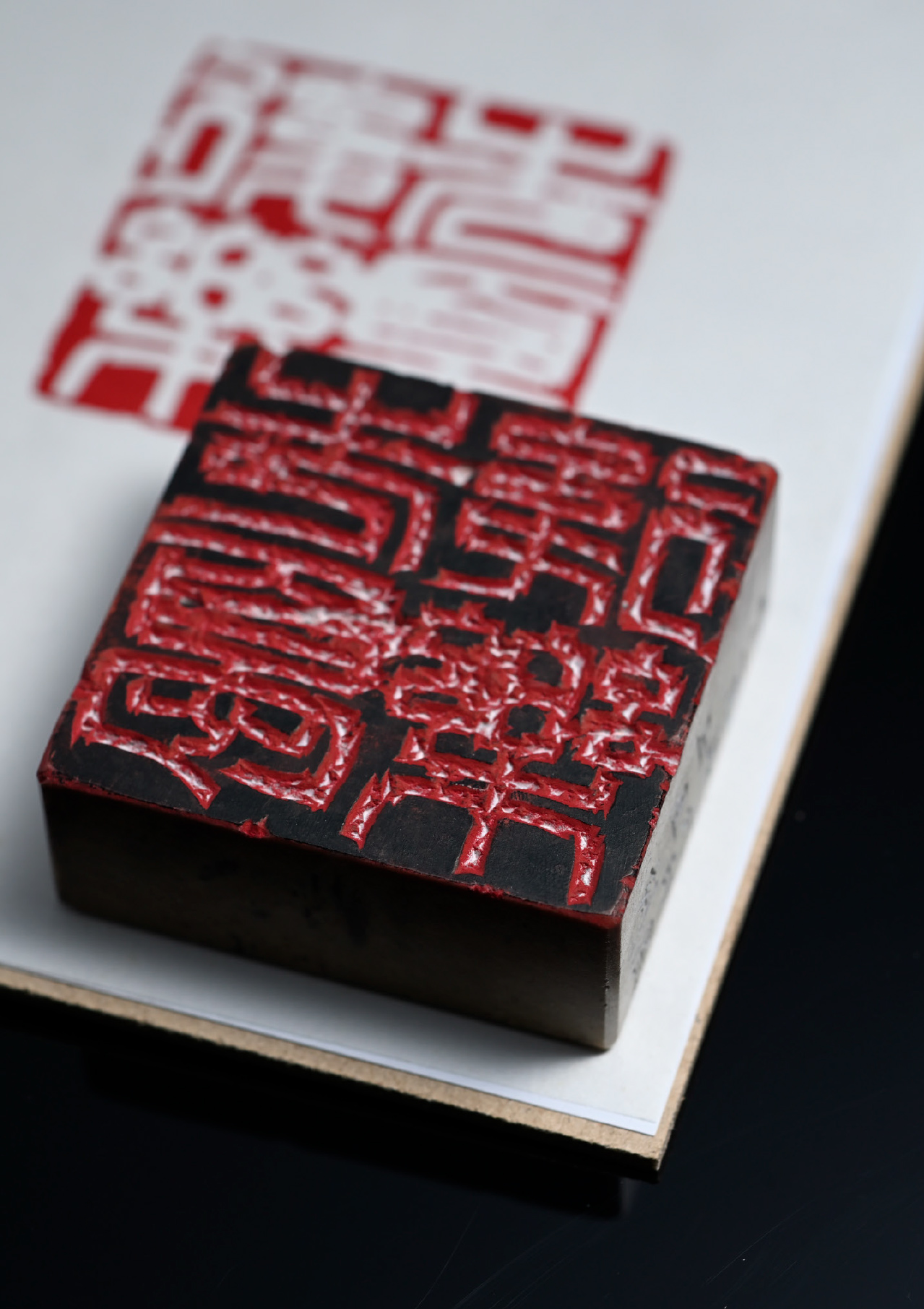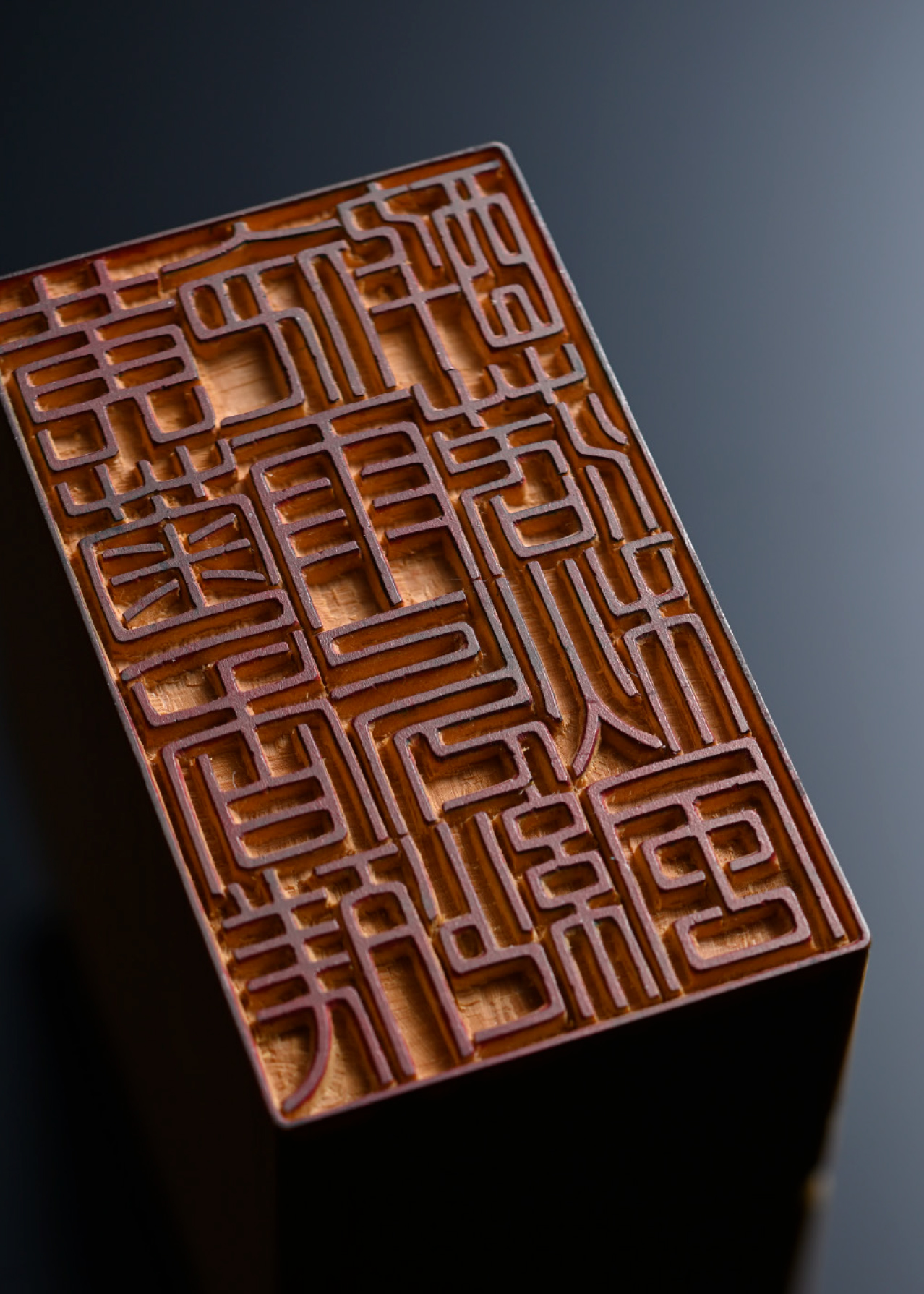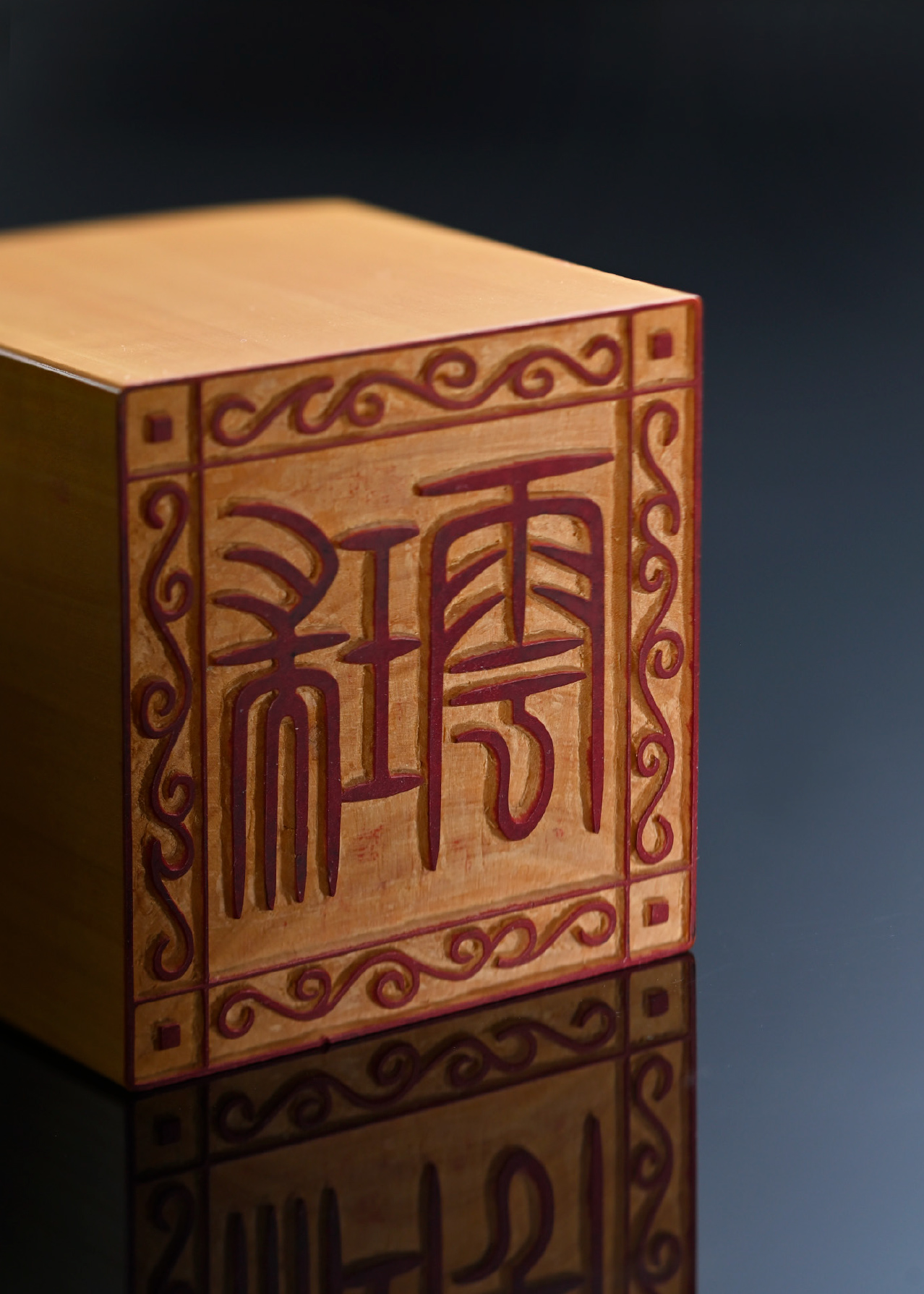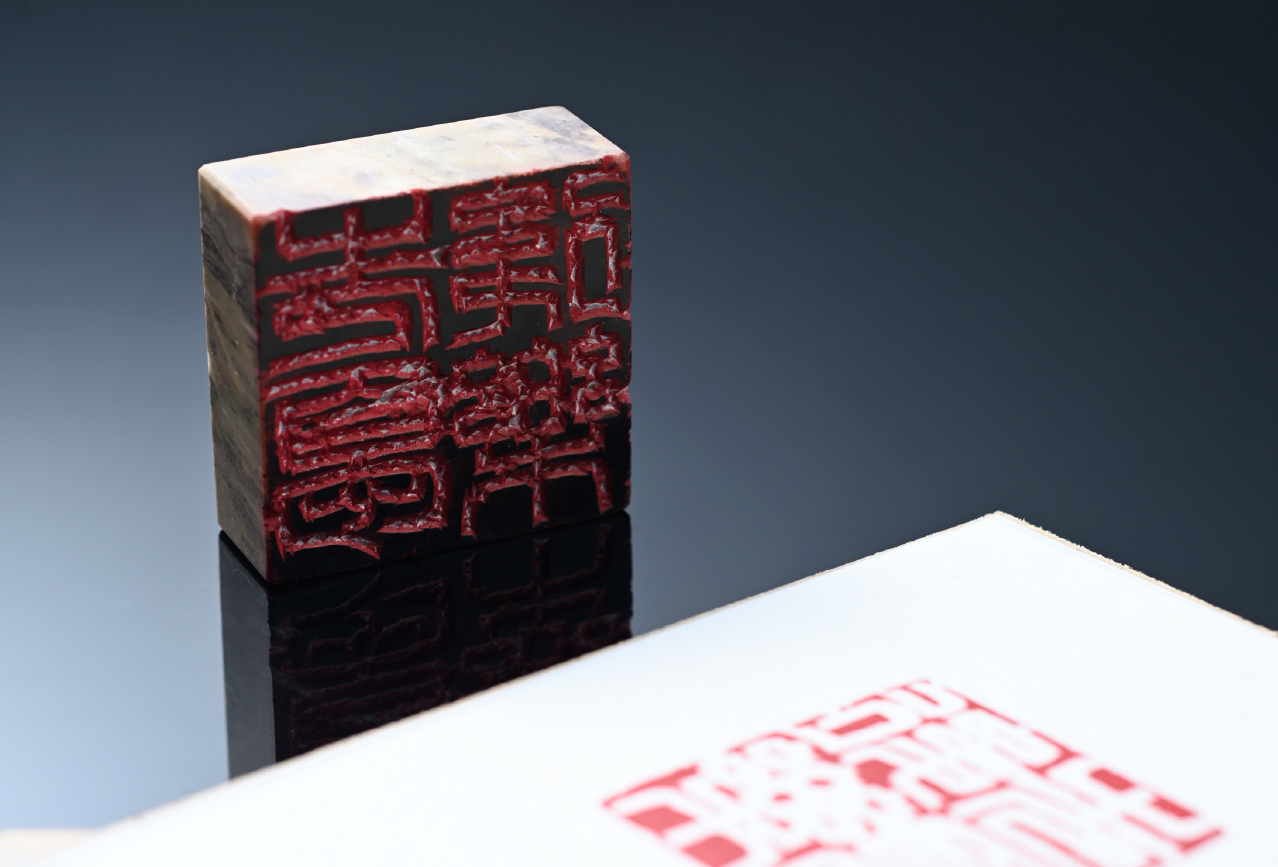京印章 京都府印章業協同組合
KYO-INSHOKYO SEALS 1
1
- 捺印すると文字が白抜きになる陰刻。
京印章(はんこ)の歴史は、京都の歴史とともにあります。794年、都が京都に移されたのを機に、官職や役所名をあらわす官印づくりが始まりました。これが京印章の起源です。官印の製造は朝廷のみが行う重要な職務の一つで、銅などの金属を鋳造してつくられていましたが、次第に石や木に文字を彫るかたちに移行し、個人の使用が認められるようになりました。その伝統は、的確な書体を用いる字法、文字の意味を踏まえ、生き生きとしたバランスで文字を整える章法、切れ味のよい印刀で彫り上げる刀法の3法として継承されています。京印章の用途は、実印や銀行印、法人印といった実務的なものだけでなく、近年人気を集めている御朱印にも用いられる神社や寺院の印章、さらには落款印や遊印など、個人の趣味のためのものにも及び、絵手紙や書道、絵画などの創作活動において、自作の証として落款を楽しむ人が増えています。
The history of the inshō (stamped seal) in Japan began when the capital moved from Nara to Kyoto in 794. Kyo-inshō originated with the creation of official seals to represent Imperial and government offices. The Imperial Court held a monopoly on the production of official seals, which at the time were made from cast metal such as copper. Gradually, seals evolved into personal use and began to be carved into stone or wood.This hand-made tradition has been passed down in three methods: a character method that uses an accurate typeface; a chapter method that arranges the characters in a lively balance based on the meaning of the character, and a sword method engraved with a sharp sword. Kyo-inshō is not only used for official documents such as registered seals, banking and corporate seals, but also for collectors of shrine and temple seals. In recent years the personal use of stamped seals has become increasingly popular, as individuals can "sign" creative work such as picture letters, calligraphy and paintings.
 2
2
 3
3
 4
4
2,3. : 捺印すると文字が印肉によってあらわれる陽刻。 京印章では、おもに「印篆」という書体を使用する。
- : 捺印すると文字が白抜きになる陰刻。
1,4: Hollow relief carving that stamps the outline of characters. 2,3: An embossed carving with characters which appear when you stamp. Kyo-inshō mainly uses the "Inten" font.

